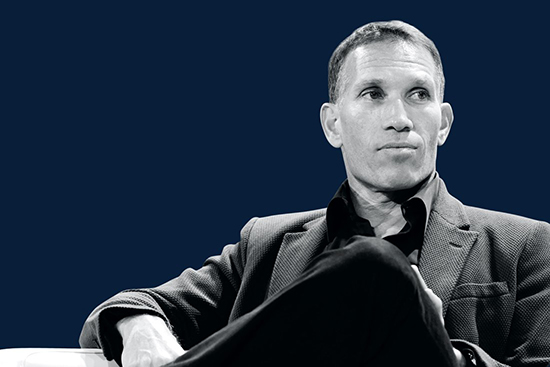高層換血日,股市抄底時(shí)——CEO更替令4只個(gè)股看多

|
最近幾年,很少有哪家公司換CEO換得像美泰公司這樣快,。從2015年到現(xiàn)在,,美泰的CEO寶座已經(jīng)三次易主。最近一次是去年4月,,前谷歌高管瑪爾戈·喬治亞迪斯從美泰離職,,由伊農(nóng)·克雷茲接任。 美泰走馬燈似的換CEO其實(shí)并不令人意外,,畢竟克雷茲的幾個(gè)前任都沒(méi)能阻止住公司業(yè)績(jī)下滑的頹勢(shì),。從2014年到2017年,美泰的營(yíng)收下跌了23%,,在亞馬遜的強(qiáng)勢(shì)絞殺下,,美泰的線下零售伙伴(如玩具反斗城等)紛紛潰不成軍,美泰的銷售網(wǎng)點(diǎn)越來(lái)越少,。與此同時(shí),,它的競(jìng)爭(zhēng)對(duì)手們卻依然保持增長(zhǎng)??上攵?,美泰的股價(jià)也是老一年不如一年。 不過(guò)從最近公司領(lǐng)導(dǎo)層的變化看,,投資者還是能找到一些希望的,。不少案例表明,CEO的離職往往反映了企業(yè)深層的大范圍戰(zhàn)略調(diào)整,,因而經(jīng)常會(huì)給企業(yè)及其股東帶來(lái)顯著利好,。 眼下企業(yè)界正在經(jīng)歷一輪深度震蕩,投資者需要考慮的變革因素也比以往多得多,。根據(jù)再就業(yè)公司Challenger, Gray & Christmas的數(shù)據(jù),,2018年,美國(guó)有1452家擁有10名以上員工的企業(yè)的CEO離職,,比2017年足足多出四分之一,,這也是自2008年經(jīng)濟(jì)危機(jī)以來(lái)CEO離職人數(shù)最多的一年。在離職者中,,有四分之一被歸為“退休”,,還有一部分CEO是因?yàn)樾则}擾等不當(dāng)行為離職的??傊?,CEO的高離職率表明,新一輪的衰退趨勢(shì)已經(jīng)影響了很多企業(yè)的收益和股價(jià),,而這些企業(yè)也正在通過(guò)人事調(diào)整,,積極適應(yīng)不斷變化的外部經(jīng)濟(jì)環(huán)境,。 在某些情形下,CEO更替對(duì)企業(yè)可能是特別有利的,。比如一份最近發(fā)表的研究表明,,如果一家公司的CEO和董事會(huì)在戰(zhàn)略上存在分歧,并由此導(dǎo)致CEO下課,,則公司更有可能在長(zhǎng)期實(shí)現(xiàn)顯著的業(yè)績(jī)提升,。 該報(bào)告的作者研究了1995年至2012年間發(fā)生的97起CEO因與董事會(huì)存在戰(zhàn)略分歧而被迫離職的案例。該報(bào)告的作者之一,、密蘇里大學(xué)的金融學(xué)教授昆塔拉·普克薩東指出:一般來(lái)說(shuō),,并不是CEO一離職了,,企業(yè)的境況就會(huì)一夜之間出現(xiàn)改善,。CEO離職引發(fā)的業(yè)務(wù)問(wèn)題和大眾的消極反應(yīng)一般會(huì)使公司股價(jià)遭受長(zhǎng)達(dá)12個(gè)月的影響。不過(guò)接下來(lái)幾年,,這種影響會(huì)越來(lái)越小,。普克薩東的研究團(tuán)隊(duì)發(fā)現(xiàn),在CEO離職三年之后,,這類企業(yè)的股價(jià)都恢復(fù)到了行業(yè)平均水平——也就是說(shuō)那些選擇在低位抄底的股民都賺了一筆,。 為何會(huì)發(fā)生這種現(xiàn)象?原因是在領(lǐng)導(dǎo)層多次變動(dòng)后,,企業(yè)重新調(diào)整了自己的長(zhǎng)期目標(biāo),。這些企業(yè)新招募的CEO更加青睞長(zhǎng)期獎(jiǎng)勵(lì)機(jī)制——比如限制性股權(quán),而不是短期獎(jiǎng)勵(lì)機(jī)制——比如達(dá)到季度業(yè)績(jī)目標(biāo)就拿獎(jiǎng)金,。另外,,這類公司也更加注重自我改革,而不是利用股票回購(gòu)等策略刺激短期股價(jià),。在這些公司領(lǐng)導(dǎo)層發(fā)生更替的三年后,,它們的資本支出平均增長(zhǎng)了36%——這是一個(gè)非同尋常的速度。而它們的資產(chǎn)賬面價(jià)值也大幅上升,,這也是企業(yè)內(nèi)部投資增加的一個(gè)跡象,。 |
In recent years, few corner offices have had doors that revolved as fast as Mattel’s. The toymaker has replaced its CEO three times since 2015—most recently last April, when former Google executive Margo Georgiadis stepped down from the post, to be replaced by Ynon Kreiz. The turmoil isn’t surprising: After all, Kreiz’s predecessors weren’t able to stanch the decline in Mattel’s revenues, which dropped 23% from 2014 to 2017. With brick-and-?mortar retail partners like Toys “R” Us struggling or collapsing under the Amazon onslaught, Mattel has fewer sales outlets, even as the ranks of its competitors grow. And Mattel’s stock price, to borrow a phrase from one of its vintage games, has gone Ker Plunk. But investors can find reason for hope in Mattel’s most recent leadership change. There’s growing evidence that CEO departures that are driven by a wider strategic realignment often result in substantial improvements—for the business and its shareholders. These days, investors have many more changes than usual to consider. According to outplacement firm Challenger, Gray & Christmas, 1,452 CEOs at U.S. companies with more than 10 employees left their jobs in 2018—a 25% increase from 2017 levels and the largest wave of departures since the 2008 recession. About a quarter of those leave-takings were classified as retirements, and a handful were driven by #MeToo issues and other misconduct. But the high turnover also reflects businesses coping with a changing economic environment in which recessionary trends have begun to undermine their earnings and share prices. Amid all this disruption, there’s one category of CEO change with potential to be particularly profitable. A recently published study indicates that in situations in which the CEO and the board disagree on strategy, leading to the chief executive’s resignation or dismissal, companies are more likely to see a meaningful performance boost over the long term. The study’s authors found 97 cases between 1995 and 2012 in which a CEO was forced to leave a position owing to a disagreement over strategy with the board. Improvement doesn’t happen overnight, explains co-author and University of Missouri finance professor Kuntara Pukthuanthong: The business problems and public disagreements surrounding the departure often depress the company’s share price for the 12 months after the turnover. Over the ensuing years, however, such businesses narrow the gap. Pukthuanthong’s team found that three years after the change, stock performance for companies in the group was back on par with their industry’s—rewarding those who took a chance on the stocks at their nadir. One reason for the success has to do with the way companies reoriented around longer-term goals after many leadership changes. The new hires the team studied were more likely than their predecessors to get more of their compensation in the form of long-term incentives, like restricted stock options, than in short-term ones, like bonuses for hitting quarterly benchmarks. Not coincidentally, there was evidence that such companies focused more on improving themselves than on using tactics like share repurchases to lift their stock in the short term. Three years after the firms underwent leadership changes, their capital expenditures had risen by 36% on average—an unusually fast pace. The book value of their assets had risen substantially too, another sign of greater internal investment. |

|
當(dāng)然,,去年有多少前任CEO下崗,,就有多少新任CEO上位,這也給投資者帶來(lái)了很多抄底的機(jī)會(huì),?!敦?cái)富》對(duì)部分管理層變動(dòng)的企業(yè)進(jìn)行了研究,,發(fā)現(xiàn)如果一些公司的新管理層如果戰(zhàn)略執(zhí)行得好,他們的股票很可能將出現(xiàn)飆升,。 首先是吉利德科學(xué)公司(Gilead Sciences),。這家公司的前任CEO約翰·米利根于2018年年底辭職。在米利根的任期內(nèi),,該公司股價(jià)下跌了24%,。在幾家新晉競(jìng)爭(zhēng)對(duì)手的圍剿下,作為該公司主打產(chǎn)品的丙肝藥物銷售收入大幅下降,。Cowen公司的分析師菲爾·納多認(rèn)為,,到2023年,吉利德丙肝藥物的銷售額將從2017年的91億美元下跌至不足30億美元,。瑞士羅氏的前高管丹尼爾·奧迪將于今年3月接任吉利德公司CEO,,他的任務(wù)是從其他領(lǐng)域彌補(bǔ)這筆損失——比如在抗癌藥物領(lǐng)域,吉利德最近剛剛收購(gòu)了凱特制藥(Kite Pharma),,從而獲得了后者的免疫療法藥品生產(chǎn)線,。吉利德也在積極拓展抗艾滋病藥物市場(chǎng)。它的抗艾特效藥Truvada(中文名為特魯瓦達(dá))和Genvoya(中文名為捷扶康)可用于治療全球53%的艾滋病感染者,,銷量也比上年增長(zhǎng)了12%,。納多表示,以該公司目前的股價(jià)看:“可以說(shuō)是一只很有價(jià)值的股票”,。 其次是施樂(lè)(Xerox),。光是印刷行業(yè)的日薄西山就已經(jīng)夠讓它鬧心的了,然而在2017年到2018年的大部分時(shí)間里,,施樂(lè)居然還有閑心跟“華爾街狼王”卡爾·伊坎斗得其樂(lè)無(wú)窮,。《財(cái)富》最近曾專門(mén)撰文揭露過(guò)雙方的齟齬,。簡(jiǎn)言之,,伊坎和另一位大股東達(dá)爾文·迪森反對(duì)施樂(lè)CEO杰夫·雅各布森將施樂(lè)與長(zhǎng)期合作伙伴富士控股進(jìn)行合并的動(dòng)議。在這兩位投資人的操作下,,施樂(lè)選出了一個(gè)新的董事會(huì),,與富士控股合并的計(jì)劃打了水漂,雅各布森也只得“下課”,,交權(quán)給現(xiàn)任CEO約翰·維森丁,。直到現(xiàn)在,施樂(lè)還在和富士就10億美元的分手費(fèi)打官司,。摩根大通的分析師保羅·科斯特表示,,在這出鬧劇背后,人們忽略了施樂(lè)仍然有“產(chǎn)出大量現(xiàn)金”的能力,。施樂(lè)的現(xiàn)金流占到了營(yíng)收入的10%,,這是非常了不起的,。這樣一來(lái),施樂(lè)就有能力維持5%的股息率,,并有余力進(jìn)行創(chuàng)新投資,,這有利于公司抵消印刷業(yè)務(wù)下滑造成的損失。維森丁計(jì)劃在今年2月公布他的戰(zhàn)略,。至于他能否給出一份讓大家認(rèn)為有希望的路線圖,,投資者們將拭目以待。 |
The past year’s bumper crop of new CEOs, of course, leaves investors with plenty of opportunities to take a flier on a business in mid-shake-up. Fortune took a look at companies in that category and identified a few whose stocks could surge if new management executes well enough on a new vision. John Milligan stepped down at the end of 2018 as CEO of Gilead Sciences, which endured a 24% decline in its share price during his tenure. Revenue from Gilead’s hepatitis C drugs, formerly blockbusters, has plummeted as rivals have entered the scene: Cowen analyst Phil Nadeau estimates sales will fall from $9.1 billion in 2017 to just under $3 billion by 2023. Former Roche Holdings executive Daniel O’Day will become CEO in March with a mandate to make up those losses in other areas—including in cancer treatment, where Gilead’s recent purchase of Kite Pharma gives it a portfolio of immunotherapy drugs. Gilead is also capturing significant growth in its HIV segment. Its therapies, including Truvada and Genvoya, are used to treat 53% of those infected with HIV worldwide, and sales rose 12% over the past year. At today’s prices, “it’s very much a value stock,” says Nadeau. As if operating in a declining industry like printing weren’t challenging enough, Xerox spent much of 2017 and 2018 in a battle with activist investor Carl Icahn. As Fortune chronicled in a recent feature, Icahn and fellow shareholder Darwin Deason opposed CEO Jeff Jacobson’s efforts to merge Xerox with longtime partner Fujifilm Holdings. The two investors secured election of a new board, the Fuji deal fell through, and Jacobson gave way to current CEO John Visentin. Xerox is still fighting with Fuji over a $1 billion breakup fee. But the drama has obscured the fact that Xerox “generates a bunch of cash,” says JPMorgan analyst Paul Coster. Its operating cash flow adds up to an impressive 10% of revenues. That gives the company the ability to support a 5% dividend yield, as well as the flexibility to invest in innovations that could help Xerox offset the decline in printing. Visentin is scheduled to outline his strategy in February; investors will be watching to see whether it looks like the road map to a rebound. |

|
另一家值得關(guān)注的公司是服務(wù)零售商Lands’ End,,它是2013年從西爾斯控股拆分出來(lái)的一家公司,。該品牌的標(biāo)志性產(chǎn)品是卡其褲和休閑服飾,為了吸引年輕消費(fèi)者,,它的前任CEO費(fèi)代麗卡·馬爾基翁尼決定向更加時(shí)尚的設(shè)計(jì)轉(zhuǎn)型,。但她的戰(zhàn)略既未得到消費(fèi)者的追捧,也沒(méi)有贏得董事會(huì)的支持,。馬爾基翁尼于2016年辭去CEO一職,由現(xiàn)任CEO杰羅姆·格里菲斯于2017年3月接任,。格里菲斯恢復(fù)了品牌的原有風(fēng)格,,更加注重大衣和外套等產(chǎn)品。從短期看,,他的戰(zhàn)略對(duì)這價(jià)市值14億美元的公司是有效的,。公司的營(yíng)業(yè)收入從2017年前三個(gè)季度的虧損,轉(zhuǎn)為2018年同期的盈利1190萬(wàn)美元,。C.L. King公司的分析師史蒂芬·馬洛塔認(rèn)為,,如果該公司的銷售增長(zhǎng)率能繼續(xù)提速(目前約為6%),那么Lands’' End可能是個(gè)不錯(cuò)的投資選擇,。馬洛塔目前對(duì)該公司的股票持中立態(tài)度,。 最后我們也不要忘了接連換了幾位掌門(mén)人的美泰公司。美泰的現(xiàn)任CEO克雷茲來(lái)自電視制作行業(yè),,他的戰(zhàn)略是對(duì)孩之寶等競(jìng)爭(zhēng)對(duì)手采取跟隨策略,,同時(shí)通過(guò)大屏幕來(lái)與小朋友們建立紐帶。2020年,,一部真人版芭比娃娃電影將登陸各大影院,,本片主演是曾獲得奧斯卡影后提名的瑪歌特·羅比。這也是克雷茲為了重振芭比娃娃這一品牌祭出的殺招,。對(duì)費(fèi)雪,、小火車托馬斯等稍顯過(guò)時(shí)的老品牌,,預(yù)計(jì)也會(huì)采取類似的社交媒體渠道進(jìn)行包裝。與孩之寶不同,,美泰旗下的玩具很多都是自行生產(chǎn)的,,而不是外包出去??死灼澯?jì)劃在今年年底前削減6.5億美元的生產(chǎn)成本,。這些舉措已經(jīng)開(kāi)始對(duì)利潤(rùn)產(chǎn)生積極影響。當(dāng)然,,要讓的投資者真正享受到他的改革紅利,,克雷茲還需要一種他的前任最缺少的東西——時(shí)間。(財(cái)富中文網(wǎng)) 本文的另一版本登載于2019年2月刊的《財(cái)富》雜志,,題目是《首席執(zhí)行官變動(dòng)可能對(duì)公司有利》,。 譯者:樸成奎 |
A company further along in its revamping journey is clothing retailer Lands’ End, which was spun off from Sears Holdings in 2013. Its previous CEO, Federica Marchionni, sought to woo a younger demographic, moving a brand known for khakis and casual wear to more fashionable designs. But her strategy neither gained traction nor won over the board. She left in 2016, and current CEO Jerome Griffith replaced her in March 2017. Griffith has gone back to the company’s roots, focusing on coats and other outerwear. Short term, the strategy has worked for the $1.4 billion company. Operating income flipped from a loss in the first three quarters of 2017 to an $11.9 million gain over the same period in 2018. If the company’s pace of sales growth—currently 6%—accelerates, Lands’ End could be a good buy, says C.L. King analyst Steven Marotta, who’s currently neutral on the stock. And let’s not forget turnover-plagued Mattel. Kreiz, the latest CEO, comes from the world of television production, and he aims to follow the lead of Hasbro and other competitors by connecting with kids via the big screen. In 2020 a live-action Barbie film, starring Academy Award nominee Margot Robbie, will hit theaters as part of a revitalization of that iconic doll line; similar media splashes could turn around big but aging brands like Fisher-Price and Thomas the Tank Engine. Mattel, unlike Hasbro, makes many of its own toys instead of outsourcing the process. Kreiz is seeking $650 million worth of cuts to its manufacturing costs, among other areas, by the end of the year, and those efforts have already begun to improve margins. Of course, to yield results for investors, he may need something his predecessors didn’t get much of: time. A version of this article appears in the February 2019 issue of Fortune with the headline “The Hidden Upside to CEO Drama.” |













